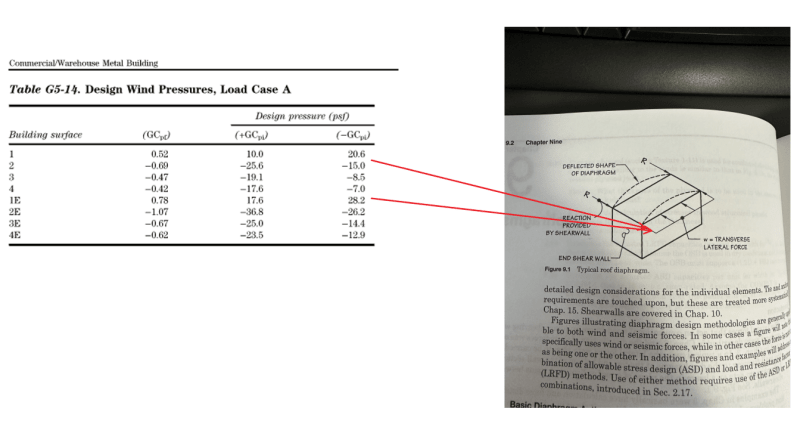Hi,
Im having a difficult time understanding how you convert ASCE 7 design wind pressures to just 1 design wind pressure, that is shown in most textbook/examples. When you use ASCE 7 (chapter 28 in my case) you end up with a table of design wind pressures that vary. But when you look through all the MWFRS examples, they just give you one wind load value. Do you guys have any recommendations on where I can learn about how to go from ASCE 7 design pressures to actual apploed loads on my building?
For example, on one face of a building you're given wind pressures 1 & 1E, then on the opposite face, you have wind pressures 4 & 4E. How am I supposed to convert those to one pressure? Is that specified in the code somewhere or is there a textbook that I can read this in?

Thanks!
Im having a difficult time understanding how you convert ASCE 7 design wind pressures to just 1 design wind pressure, that is shown in most textbook/examples. When you use ASCE 7 (chapter 28 in my case) you end up with a table of design wind pressures that vary. But when you look through all the MWFRS examples, they just give you one wind load value. Do you guys have any recommendations on where I can learn about how to go from ASCE 7 design pressures to actual apploed loads on my building?
For example, on one face of a building you're given wind pressures 1 & 1E, then on the opposite face, you have wind pressures 4 & 4E. How am I supposed to convert those to one pressure? Is that specified in the code somewhere or is there a textbook that I can read this in?

Thanks!
